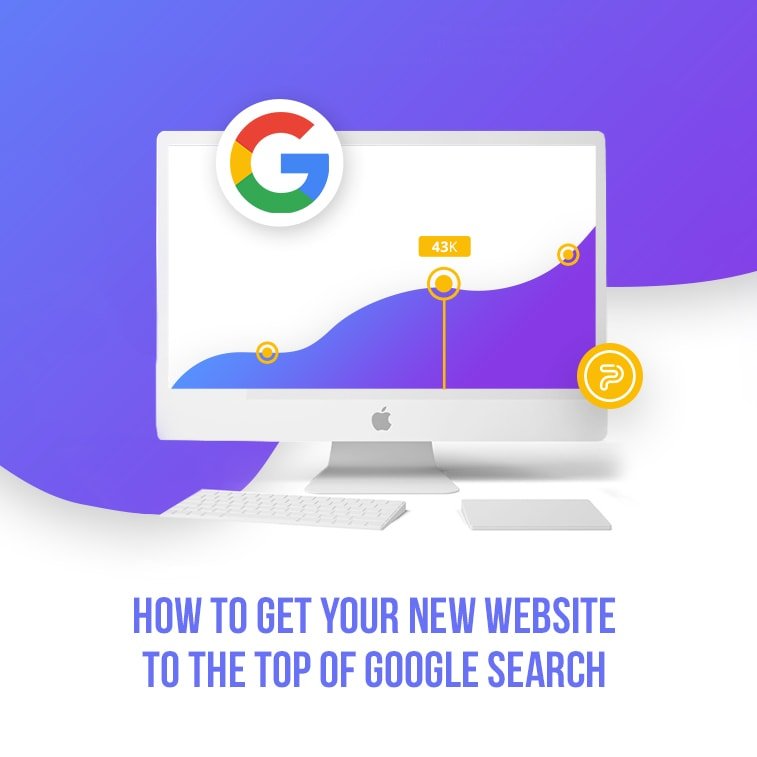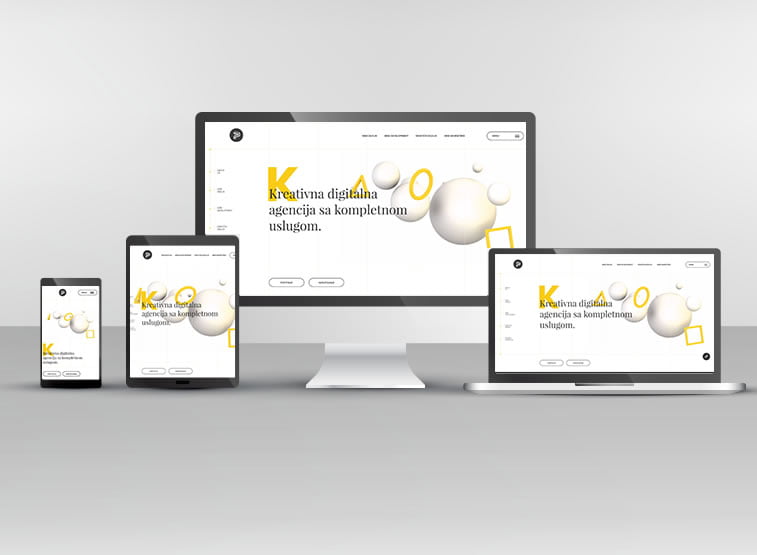No matter if you own an online shop or a legal or natural person only entering the world of online business, you have probably realized by now that without good rankings your website is doomed.
Depending on the market and the part of the planet you live in, your consumers probably use one of two most dominant search engines – Google or Bing – which take up almost 85% of searches on the Internet.
If you want your website to be at the top of either these search engines (or Yahoo, Ask, AOL, Baidu, Yandex), the rules will practically be the same. Today we are going to focus on one aspect only. This aspect is, however, the key to designing a website. Be careful because, without a quality foundation, your website is unlikely to get good results.
1. Conduct a Research and Make a pPlan
First, do your homework. Before you start the design process, call your friends, family or acquaintances and see how they will react to your ideas. If you pass this first obstacle, and they happen to like the idea, the next step would be – making a plan.
But be careful. Before you start your search and website development, you need to think about your website’s purpose. The function of a presentational website and an online shop or service website differs greatly. If you want to launch a website only to make money, you should know that this is not such a great idea and that your website is probably predestined to fail. If you want to launch a quality website to bring your profit, you are going to have to make a solid plan (with a business plan, preferably), and invest time and money to make that plan work and achieve a high ranking.
This step is key in the development process. Only after you have been completely sure that your plan is good can you proceed to the following step.
2. Find the Right Web Design Agency
There are tons of agencies that can create a website for you. There is also a large number of freelance designers and developers who create them with lower costs than agencies.
No matter who you decide to hire, make sure that you completely trust the people who are going to build a website for you, and that their previous works are great as well. It is very important that your website has no (or at least minimum) errors because a poorly designed website can cost you a lot.
The agency or person in charge of your website should pick the platform. At this first stage, you need to highlight what the purpose of your website should be and what they need to build because the choice of a platform is highly dependent on the purpose.
3. Structure Your Website
When you have already hired your web design agency or freelance designer, it is time to move on to the next stage: structure.
Again, you need to conduct a research. First, check what your competition is doing. Second, think about the keywords your website and business are supposed to rank for. Third, search Google and analyze websites which are already on the first and second pages. Look at the structure of their menus, homepage, how much text there is, and what they are actually presenting. Is the navigation good? Can users easily find the necessary information? All of these things matter.
After this, make the first draft of your future website’s structure. Just do not copy your competitors. Additionally, the content of your website must be unique because Google pays special attention to uniqueness. Create the structure of your menu, submenus, think about what your homepage should consist of, and what should be of greatest importance.
In this phase, you can also try to make an internal linking structure. Start connecting pages logically. Introduce the most important web pages on the homepage and link to them; connect internal pages with one another to make access easier. And finally, put the main categories or products on the homepage and thus highlight what you find crucial.
Never forget that you are building your website for visitors, and not search engines, so try to make things as easy as possible for the humans and give them the information you believe they need.
After this is done, you should also consult an experienced digital marketing expert. Talk to the agency who is in charge of designing your website and ask for their advice to see if the structure is good.
4. Web Design
4.1. Web design agency
After you have figured out what the purpose of your website is and when you have created the structure of the menu, homepage, and internal pages, the time has come to go visual. If you opt for a web design agency, their designers can outline the design of all pages: homepage, portfolio, products, blog, about, contact, etc.
In the end, you should be completely satisfied with what the designer did for you and make sure to express any comments or faults the design may have. Try to view the website in terms of its function, and whether you as a user would find the navigation easy to use.
After the design is over, the next phase is development.
4.2. Freelance web designer
But, what if your website is designed by a freelancer?
In this case, your task may get slightly complicated. There is no single person who can do everything for you: web design, web development. Monitoring a large group of people who are not working in the same office may be a time-consuming process. You are going to have to search for the website you like and specify what exactly you need on every page. Also, ask the developer to inform you about the progress and show you all the stages of work.
Also, make sure to point out all the faults you may find along the way because your website needs to have all the options you find necessary. If you think that some parts of the website are not logical and difficult to navigate, the users will not be able to do so either. In the end, every element of your website needs to be logical.
5. Create Quality Content
The time has come to start writing content and uploading it to the website. This can be very exhausting and last longer because it requires investing a lot of time into research.
If you are not so good at writing, you can hire a professional copywriter. Make sure to present your initial idea (the first step you did before finding the right agency). Do not go into too many details so as not to confuse the writer, but rather ensure that they get all the necessary information for creating quality content.
5.1. Do not copy
The second option for content creation is to save money and write it by yourself. Prepare a thorough research and study this industry very well. Once you have decided on the page structure and what to write about, you can also check what your competitors are writing about. Never copy other people’s work. Google does not like copycats or non-unique content. Such pages do not rank well in the SERP.
What you need to do is to create content while having in mind keywords you want the website to rank well for. Use both keywords and key phrases (long-tail keywords) in headlines, text body, and metadata. However, you should not stuff your website with keywords. It is okay to use your keyword about three times on a single page.
5.2. Content is key to success
A well-structured website, with excellent functionalities and top content which answers user’s queries, fulfills all the requirements for a top position in the SERP.
5.3. Do not forget about CTA
Many people often forget to add a call to action (CTA) button. Add it wherever you can. Help your users to find your product or service. Present them with some more interesting texts on your blog.
Never forget what the goal of your website is and instruct your users to see more content your offer and buy your product. Do not ambush them at the top of the page. Rather, use content to convince them why your product or service is good for them. Present the problem they have and then offer the solution with your CTA.
What Not To Do:
So far, we have presented things that should be done and which, hand in hand with SEO, may bring your website to the top of Google search.
However, there are also things you should avoid doing:
(1) Avoid potentially confusing situations
Linking to a non-existent page (or a 404 page), adding a link to an irrelevant page (e.g. a link for dog training which links to a page with all dogs which were trained), inability to find a contact form, etc. – all of these are things that reduce your website’s quality, and in turn, affect ranking negatively. Keep in mind that users need to come from page 1 to page 2 in the simplest and quickest way possible.
(2) Avoid creating duplicate pages
Duplicate pages are the most common cause of a website’s inability to rank on page 1. Avoid creating duplicate content.
For example, if you sell a product with different weight, never create a new page for every package. However this seemed logical to you, it will only confuse users and Google. Instead, do the following: you can add the option of choosing the weight or size of the product.
(3) Group same category content into a single page
Do not write about lilies in three different pages with different URLs (URL is the location of your web page or file on an Internet server). Instead, create a single page which provides all the necessary information.
(4) Do not stuff your website with keywords
A website overcrowded with keywords will not rank high. Google developed an algorithm which keeps an eye on all the changes you make on your website and which does not allow any kind of manipulation of ranking.
The only way to success is to write content for users, not search engines.
(5) Do not make a website for ads only
Launching a website whose sole purpose to attract users which would place ads or to contain Google’s third-party ads is never a good idea.
Be very cautious. Users usually do not like ads and websites crowded with unnecessary content. If you have a company website, forget about ad placement. They must NEVER be at the center of attention.
(6) Quality is in the information you provide
Always keep in mind that your website must provide useful and fresh information. When your website gets enough traffic in a few years, only then can you start thinking about monetization options.
If you apply these strategies in the design and development process, and if the designers and developers apply them, rest assured that it will reach only the top position in Google search. If you combine good web design with search engine optimization, you will significantly improve the chance to outrank your competition and stay on top of the first page of Google search.






